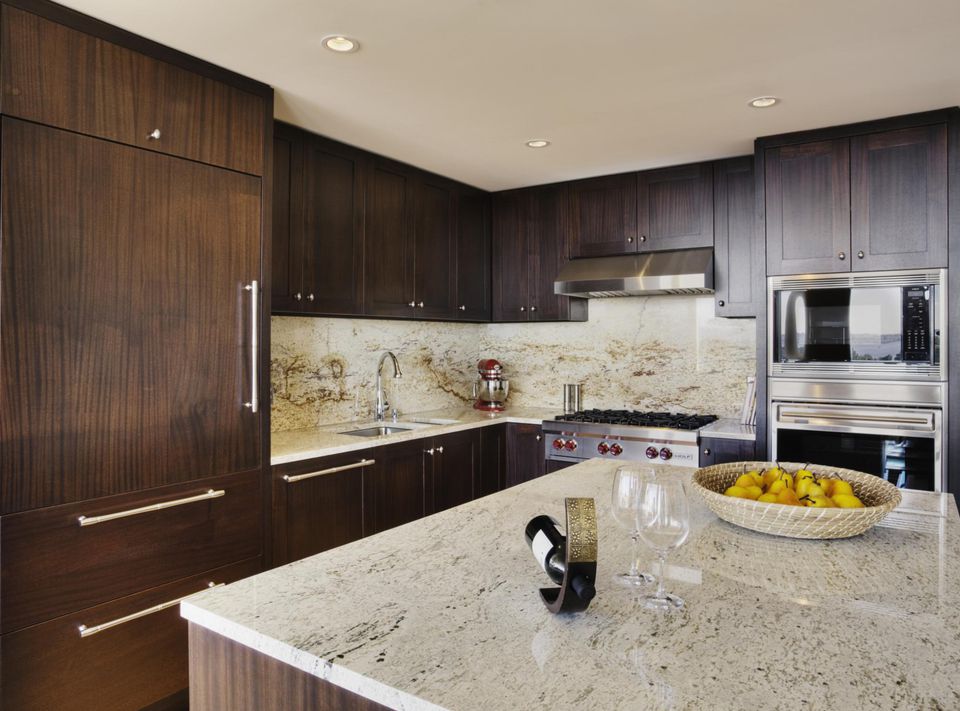
quarried directly from the earth
Decide If You Want Natural Slab or Engineered Stone
Natural slab is exactly what the name says: granite cut from the earth like slices of bread. Engineered stone is a mineral and resin mix that is formed under high pressure into slices.
Natural slab has unique, chaotic patterning and is very expensive. Engineered stone has a more homogeneous appearance and often costs less than slab.
Know That Granite Is Not As Resilient As You Think It Is
Most people, when they think of granite, believe that it is the ideal surface material in terms of durability.
After all, what could be stronger than rock hewn from the ground?
It is true that granite does a fairly good job of resisting staining, but still it is porous and does require frequent sealing. Granite is as dense as vitreous tile, so both have the same properties with respect to heat and water.
Surface Appearance Can Vary Dramatically
Because granite is a natural material, it does have a variegated surface appearance. It can be speckled or mottled, and even different granite tiles from the same box can differ substantially. Even though packers do try to maintain consistency, it is still smart for you to inspect each granite tile individually to ensure that consistency.
Watch For Granite Strength Ratings
One thing to note about purchasing granite for kitchen or bathroom is that natural stone does not receive strength ratings like manufactured ceramic tiles do. So granite does vary in strength.
That is why you will typically find thicker granite tiles then you will find with ceramic tiles—usually 3/8 inch thick or even thicker.
Keep Your Grout Lines Thin
One other difference between granite and ceramic tile is that ceramic tile can employ a grout as a design tool. Wider or thinner grout with ceramic tiles can emphasize or de-emphasize the appearance of the ceramic.
But with granite, you want to emphasize the beauty of the stone, not the lines. So that is why grout lines are very thin—1/8 inch—and the color of the grout typically attempts to mimic the color of the granite.
Save By Installing Granite In Smaller Slabs
One nice thing about granite installation is that’s possible to install a granite countertop using 12 inch square tiles, rather than single slabs of granite. It does not look as good as the continuous slab, at least in this writer’s opinion, but you save tremendous sums of money on the professional installation.
Another positive about granite countertop installation is that you don’t have to use thinset mortar or grout. Simply lay the tile close together on clear silicone caulk. When finished, apply sealer across the entire surface (you may need to apply several coats to fill all cracks).
